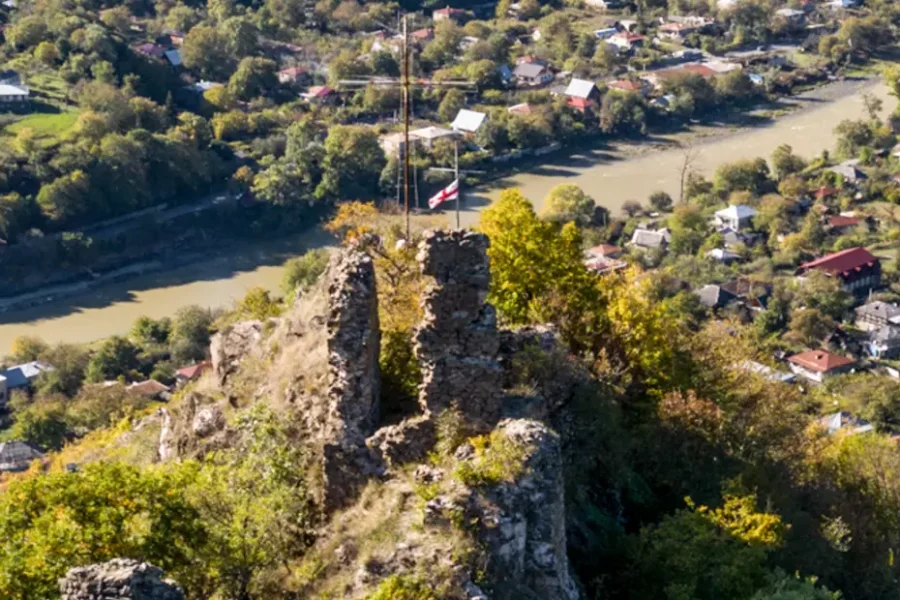Paliastomi Lake: The Mythical Heart of Colchis
Imagine a vast mirror of water hidden in the endless swamps and forests of the Colchis Lowland, holding ancient secrets and serving as a refuge for thousands of winged travelers. This is Paliastomi Lake – one of Georgia’s largest and most significant lakes, the heart and soul of the Kolkheti National Park. It is not just a body of water; it is living history, a former bay of the sea that was cut off from the ocean over time. Paliastomi is a place where myth and reality merge, where, according to legend, a lost Colchian city rests in its watery depths.
Paliastomi is unique in its nature. Its water is brackish – a result of the constant interaction between freshwater rivers and the Black Sea. This characteristic makes it a vitally important place for the ecosystem. The lake and its surrounding wetlands, which are included in the UNESCO World Heritage Sites list, constitute a “Wetland of International Importance” under the Ramsar Convention. This status highlights its role as a feeding and resting ground for migratory birds. More than 194 species of birds gather here seasonally, making Paliastomi a true paradise for birdwatchers. While boating on the lake, an endless expanse of water, reed islands, and flocks of birds soaring in the sky unfold before your eyes. It is a feeling of complete freedom and immersion in wild nature, where every corner promises a new discovery.
Key Characteristics
Name and Location
- Official Name: Paliastomi Lake.
- Location: Georgia, on the border of the Samegrelo-Zemo Svaneti and Guria regions.
- Nearby City: The city of Poti.
- Protected Area: It is part of the Kolkheti National Park.
- Coordinates: Approximately 42.13° North Latitude, 41.75° East Longitude.
Physical Characteristics
- Size: Surface area is 18.2 square kilometers.
- Depth: Shallow, with an average depth of 2.6 meters and a maximum of 3.2 meters.
- Elevation Above Sea Level: Below sea level (-0.3 meters).
- Shape: Oval, elongated.
- Water Type: Brackish.
- Color and Clarity: Greenish-brownish, with low transparency, rich in organic matter.
Hydrology
- Inflow/Outflow: Fed by the Pichori and Kaparchina rivers. Connected to the Black Sea by an artificial channel.
- Seasonal Changes: Water level and salinity are variable. It does not freeze in winter.
Surrounding Environment
- Landscape: Colchis Lowland, surrounded by swamps, peatlands, and alder forests.
- Flora and Fauna: Rich in aquatic vegetation. Home to more than 90 species of fish. It is a refuge for more than 194 species of migratory and nesting birds.
- Climate: Humid subtropical.
Human Interaction
- Recreational Uses: Popular for boat tours, bird watching, and sport fishing.
- Tourism: One of the main tourist attractions of Kolkheti National Park.
- Cultural Significance: Archaeological material from the 2nd century BC has been discovered at the bottom of the lake, confirming the existence of a Colchian settlement here.
- Environmental Status: Included in the UNESCO World Heritage Sites list and the Ramsar Convention’s list of Wetlands of International Importance.
Visual & Experiential Details
- Scenery: Expansive water surface, walls of reeds, flocks of birds soaring in the sky, and impressive sunsets.
- Atmosphere: A feeling of freedom, space, and unity with wild nature.



Leave a review